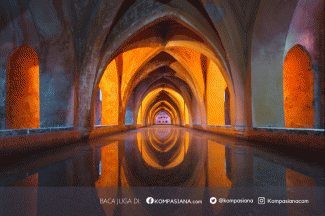The material present by Prof. Jose is talking about the war, peace building and present changes and there are happened in Bosnia and Herzegovina. Before going to the material Prof. Jose is making and giving the opening about anything that will discuss in the class of public lecture.
The 1992-1995 war in Bosnia and Herzegovina was a brutal conflict that left the country devastated. More than 100,000 people died, and millions more were displaced. The war also caused the destruction of a large part of the country's infrastructure, economy and social fabric.
In the years since the war, Bosnia and Herzegovina has made significant progress in rebuilding. However, the country is still struggling to overcome the legacy of conflict. The ethnic divisions that fueled the war remain, and a lack of trust and cooperation between the different groups. This makes it difficult to implement reforms and progress of the country.
There have been some positive changes in recent years. The economy has grown, and there have been some improvements in inter-ethnic relations. However, there is still a long way to go before Bosnia and Herzegovina can fully recover from the war.
This material will explore the history of the war in Bosnia and Herzegovina, the peace-building efforts that have been made since the war, and the challenges that the country is still facing. It will also look at some of the positive changes that have occurred in recent years.
The war in Bosnia and Herzegovina was a complex conflict fueled by ethnic tensions between three main groups of states: Bosniaks, Croats and Serbs. The war started in 1992, after the breakup of Yugoslavia, and lasted until 1995.
The Bosnian Serbs, led by Radovan Karadi, were the aggressors in the war. They attempted to create a Greater Serbia by expelling or killing Bosnian Muslims and Croats. Croats and Bosnian Muslims, on the other hand, are fighting for the unity of Bosnia and Herzegovina.
The war was very brutal, and there were many atrocities committed by all sides. The Bosnian Serbs were responsible for some of the worst atrocities, including the Srebrenica massacre, in which more than 8,000 Bosnian Muslim men and boys were killed.
The war finally ended in 1995 with the signing of the Dayton Accords. The Dayton Agreement created a new framework for peace in Bosnia and Herzegovina, which included a complicated system of power-sharing between the three main ethnic groups.
Peacebuilding in Bosnia and Herzegovina is the second material Prof. Jose given to us.The Dayton Agreement is a significant achievement, but it does not and the challenges facing Bosnia and Herzegovina. The country is still divided, and there is a lack of trust and cooperation between the different ethnic groups.
In the years since the war, there have been significant efforts to establish peace in Bosnia and Herzegovina. These efforts include the establishment of a number of new institutions, such as the Office of the High Representative, whose task is to oversee the implementation of the Dayton Accords.
